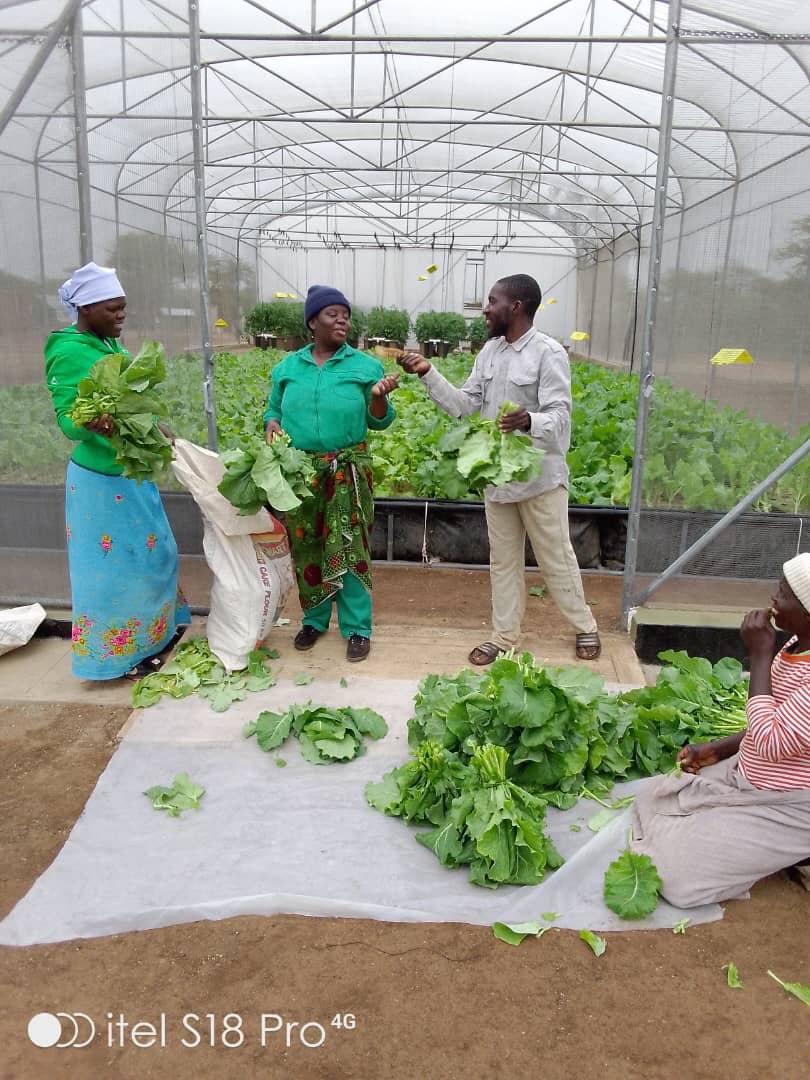In 2023 Zimbabwe increased its horticulture exports to China, providing a boost to a sector that has seen little growth in recent years with agricultural production favouring grains.
The country’s horticultural sector experienced disruptions over the years due to factors that included a lack of skilled labour after the land reform programme and a lack of wide interest in the sector by indigenous farmers. However, in recent years and with figures released by the authorities, the sector is experiencing a rebound, with China claiming the bulk of exports.
This follows trade agreements between Zimbabwe and China with the world’s second largest economy expressing interest in the Southern African country’s citrus fruits.
The Chinese are also being targeted for the export of blueberries, with small-scale farmers venturing into a sector previously dominated by commercial farmers.

Pictures courtesy of Herald and Newsday
According to Zimtrade, a state owned entity in charge of promoting international trade, China has shown a great appetite for a range of produce that includes avocados, watermelons, fresh peas, and fresh peanuts, alongside citrus fruits.
Zimtrade says in 2020, horticulture exports stood at USD122 million, which was lower than its peak before the country embarked on the controversial land reform programme at the turn of the millennium.
The country is aiming to return to those glory days, and with new entrants eying the Asian market, the incentive to grow internationally approved horticulture produce has increased.
While Zimtrade has lauded the trade protocol that specifically targeted the export of horticulture produce, it underlined the need for local farmers to invest in what it calls supporting infrastructure.
Because horticulture is a highly specialised sector and capital intensive, this has compromised export potential for quality produce, officials say.

Private investors have trained and contracted thousands of local farmers to grow horticulture produce and this is expected to add value to export initiatives as the country doubles its efforts towards meeting goals of a multi-billion-dollar agricultural economy.
Zimbabwe has a long history of exporting horticulture to the European Union which for years was the primary destination, but at the turn of the century as relations between the two soured, Zimbabwe turned to China.
The country is steadily building its exports to China, with a local consultancy noting that there is increased interest in Zimbabwe’s blueberries in Asia.
“We were very interested to see that there is a huge demand for Zimbabwean citrus in China, we also got very good response for Zimbabwean blueberries into China,” Clarence Mwale, Chief Executive Officer of Fair-Mark, is quoted saying by a Chinese news outlet.
“We are hoping that we get approval for blueberries soon enough so that we can start moving blueberries,” he added. the interest in horticulture is a major shift for local farmers who have traditionally turned to grain for local consumption.
The Zimbabwe-China Business Forum has called horticulture exports to China low hanging fruit as its potential to boost foreign earnings remains largely undervalued.

Pictures courtesy of Herald and Newsday
“Having top-quality produce in large quantities to sustain supply is important, but how the product is presented will also determine the success of products as China is big on packaging,” says Zimtrade, highlighting the need to professionalise the sector if horticulture trade is to be escalated.
In June this year, China approved eleven orchards and six citrus fruit packing operations in Zimbabwe as official suppliers to Chinese markets, marking a boost for the sector that has been on a lull for years.
Figures from the Zimbabwe Statistics Agency show that the country’s citrus export grew by sixty four percent between 2017 and 2022 thanks to what it says are trade protocols with China.
To emphasise the country’s focus on exports, the Horticultural Development Council (HDC) revealed that it intends to increase hectarage from around 3 300 in 2020 to about 4 500 hectares in 2025.

Pictures courtesy of Herald and Newsday
A possible USD27 million investment into horticulture production is on the table, confirming the drive to tap into the export market with China as the major destination.
Citrus Growers Association President Pete Breinstein told a recent conference that the sector is eying the revival of 10 000 hectares of citrus plantations across the country by 2030. Amid that interest to boost horticulture production, the finance ministry set aside USD30 million towards the horticulture sector to provide support production at a time when other agriculture sectors are struggling to access agri-finance.
For now, the future looks promising for horticulture growers meeting the export standards.










